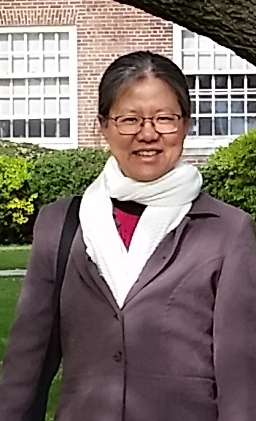Li Zhaoping facts for kids
Quick facts for kids
Li Zhaoping
|
|
|---|---|
| 李兆平 | |
 |
|
| Born | 1964 (age 61–62) |
| Education | Fudan University (BS) California Institute of Technology (PhD) |
| Known for | V1 Saliency Hypothesis(V1SH). |
| Spouse(s) | Peter Dayan |
| Scientific career | |
| Fields | Computational and Experimental Neuroscience Experimental Psychology |
| Institutions | Fermi National Accelerator Laboratory Institute for Advanced Study Rockefeller University Hong Kong University of Science and Technology University College London University of Tuebingen Max Planck Institute for Biological Cybernetics |
| Thesis | A model of the olfactory bulb and beyond (1989) |
| Doctoral advisor | John J. Hopfield |
Li Zhaoping (Chinese: 李兆平) is a famous brain scientist from China. She works at the University of Tübingen in Germany. She is known for her important ideas about how our brains see things.
One of her big achievements was winning first place in a tough physics exam in China called CUSPEA. This exam helped students go to universities in the United States. She was the only woman to win first place in the 10 years the exam was held.
She also wrote a book called Understanding vision: theory, models, and data. It was published by Oxford University Press.
Contents
Education and Early Career
Li Zhaoping studied physics at Fudan University in Shanghai, China. She earned her bachelor's degree in 1984.
After that, she moved to the United States. From 1984 to 1989, she studied for her Ph.D. in physics at the California Institute of Technology. Her professor, John Hopfield, guided her research.
Her Work and Discoveries
After finishing her studies, Dr. Zhaoping worked at several important research centers. She was a researcher at the Institute for Advanced Study in Princeton from 1990 to 1992. Then, she worked at Rockefeller University from 1992 to 1994.
In 1998, Dr. Li Zhaoping helped start a special research group. It was called the Gatsby Computational Neuroscience Unit at University College London. She worked with other famous scientists like Geoffrey Hinton and Peter Dayan to create it.
Today, Dr. Li Zhaoping is a professor at the University of Tübingen. She also leads a department at the Max Planck Institute for Biological Cybernetics. Her work there focuses on how our senses, like sight, help us move and understand the world.
The V1 Saliency Hypothesis
Dr. Li Zhaoping is most famous for her idea called the V1 Saliency Hypothesis, or V1SH. This idea explains how our brain decides what to pay attention to when we look at something.
She believes that a part of our brain called the primary visual cortex (V1) helps us notice important things in our vision. It creates a "saliency map" that guides our eyes to what stands out. For example, if you see a bright red apple in a basket of green apples, your V1 might make the red apple stand out on your brain's "saliency map." This helps your eyes quickly look at it.
When she first suggested V1SH in the late 1990s, it was a new and different idea. Many scientists thought other parts of the brain were responsible for this "saliency map." But over time, more experiments have supported her theory. Now, V1SH is a big topic of discussion among brain scientists. Some experiments show it's true, while others suggest different ideas. If V1SH is correct, it could change how we understand how our brains see.
Understanding Smells
Dr. Zhaoping has also studied how our sense of smell works. She created a model that suggests how our brain processes smells. She believes that different parts of the brain work together to help us tell one smell from another. This helps us recognize specific scents, even when there are many other smells around.
Personal Life
Dr. Li Zhaoping is married to Professor Peter Dayan. He is also a well-known scientist and leads the Max Planck Institute for Biological Cybernetics.

